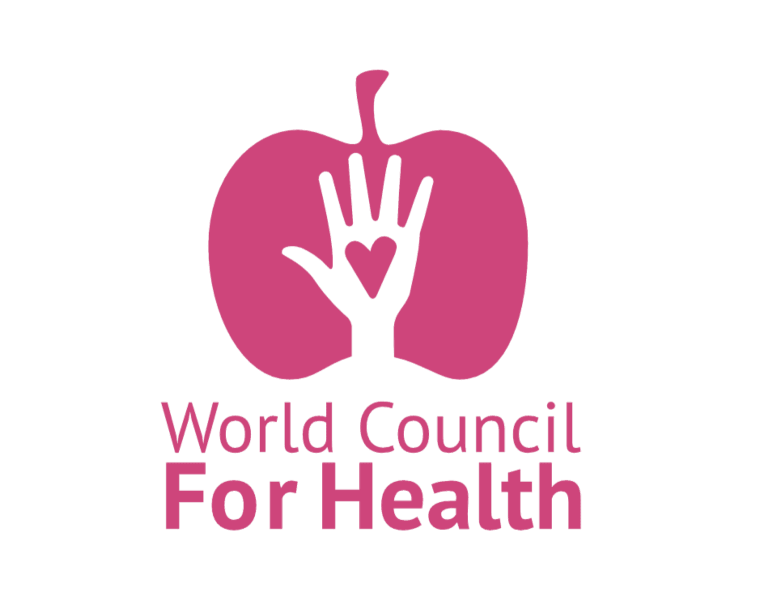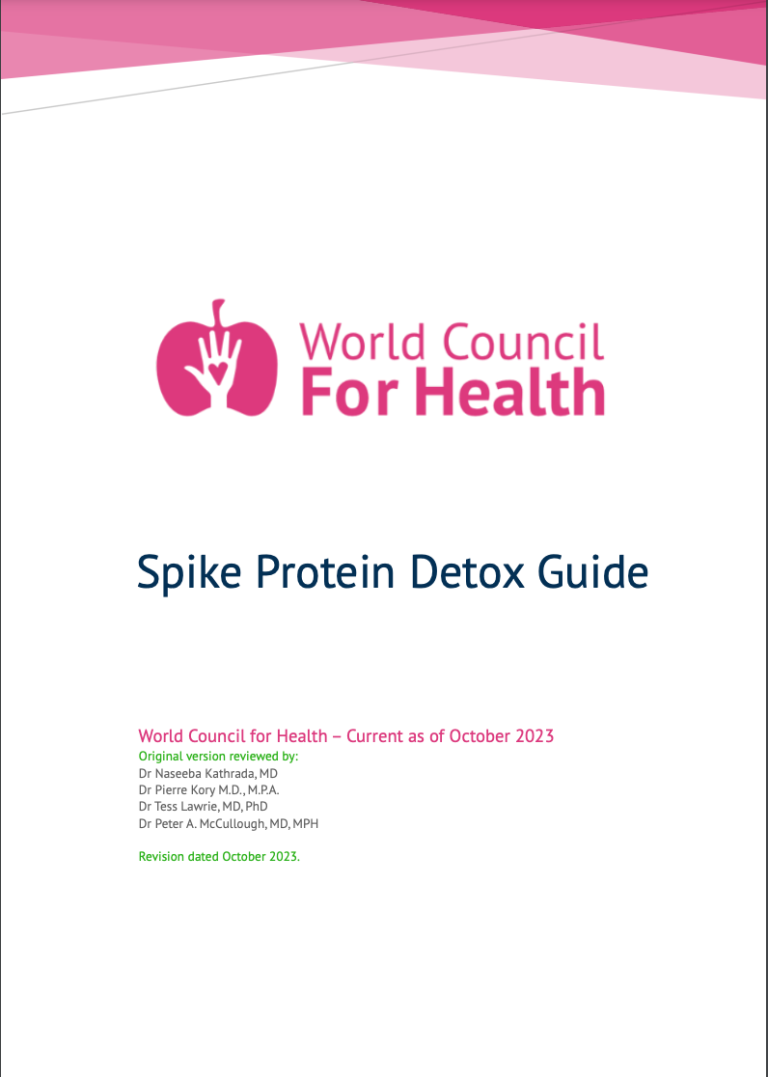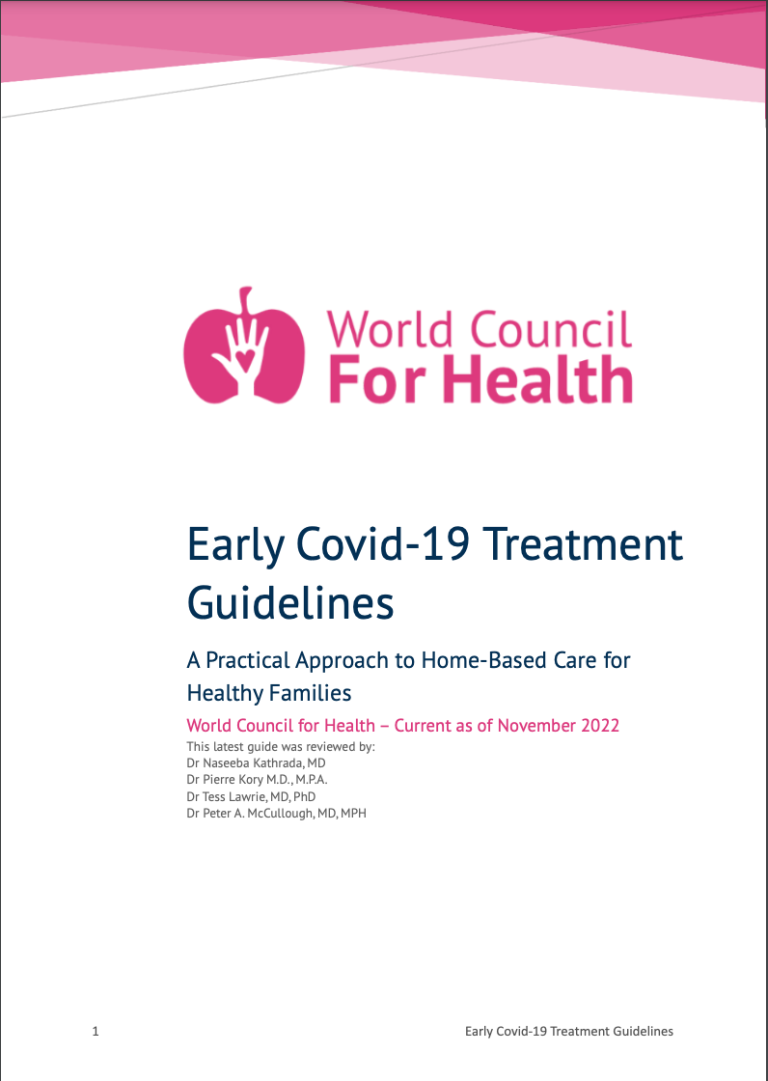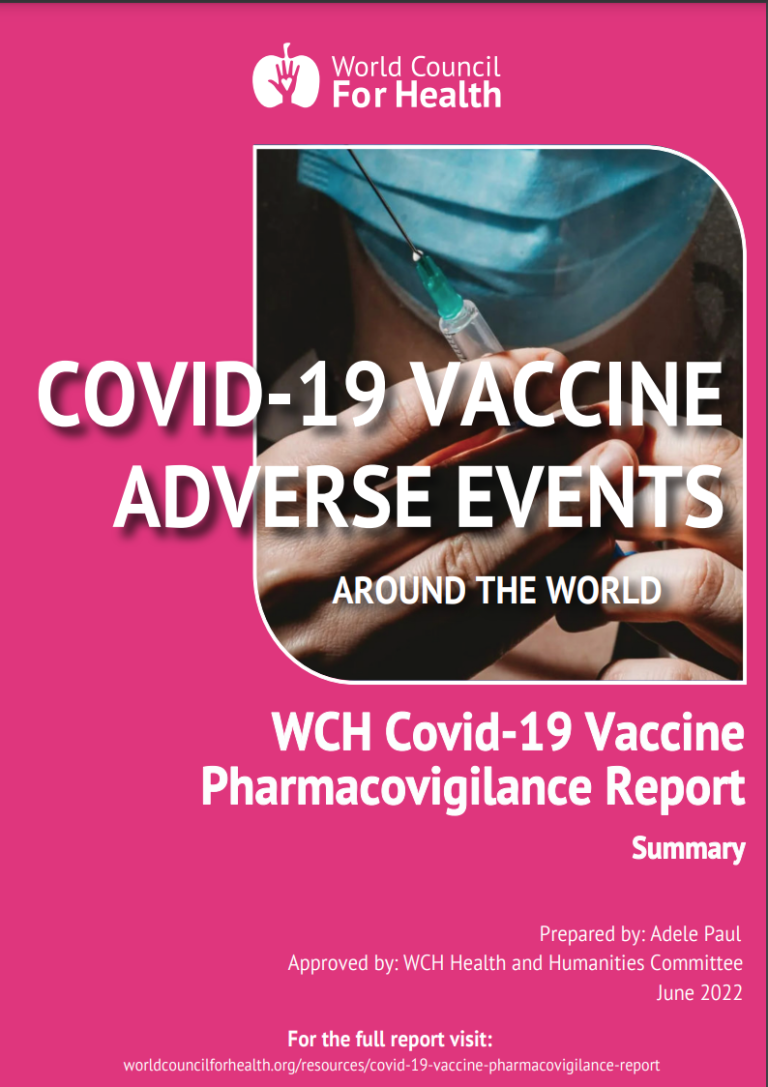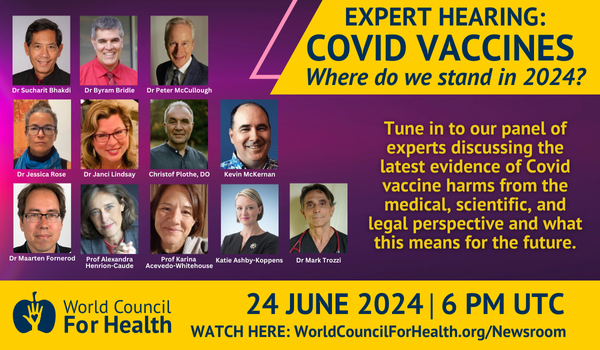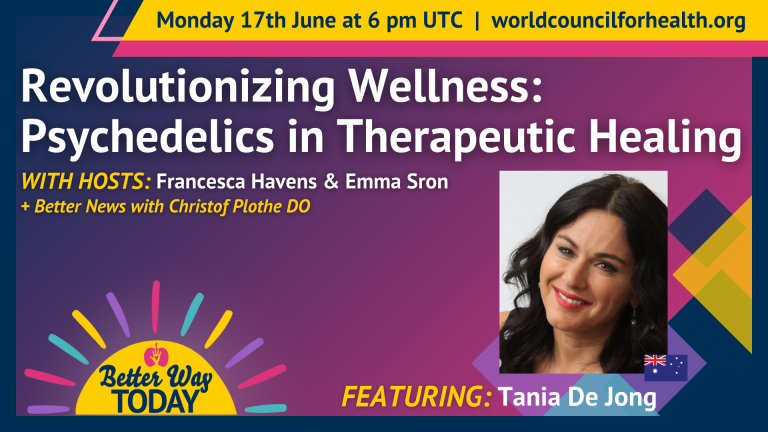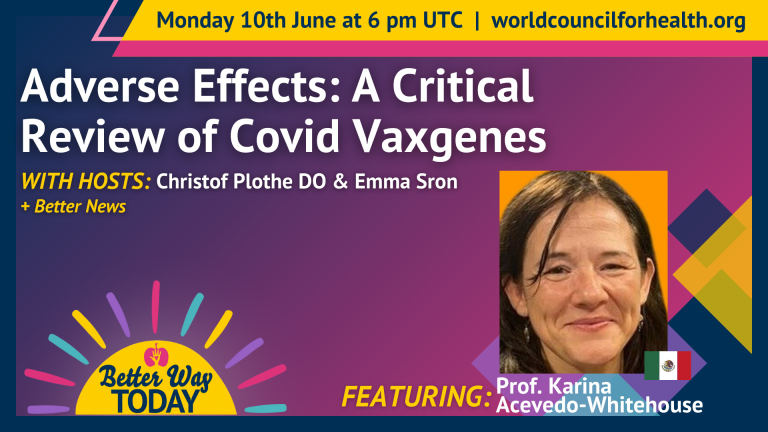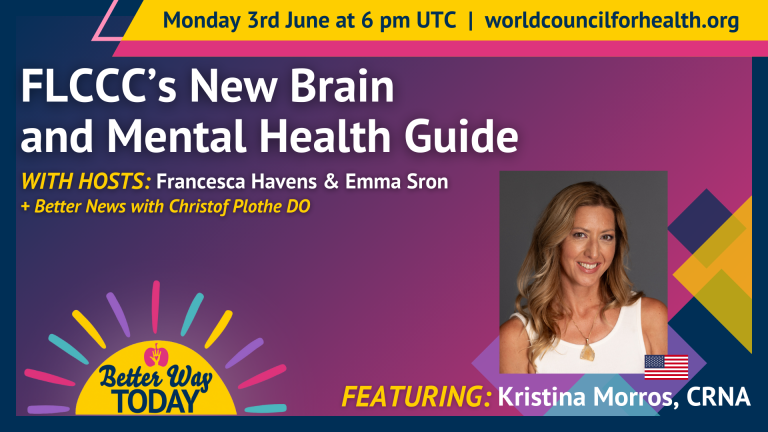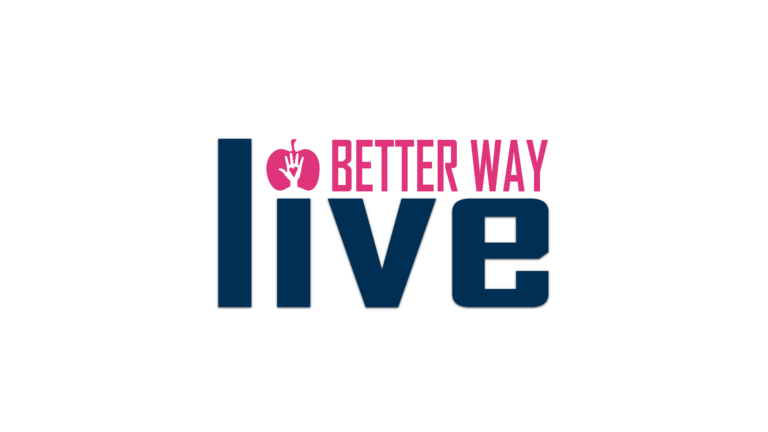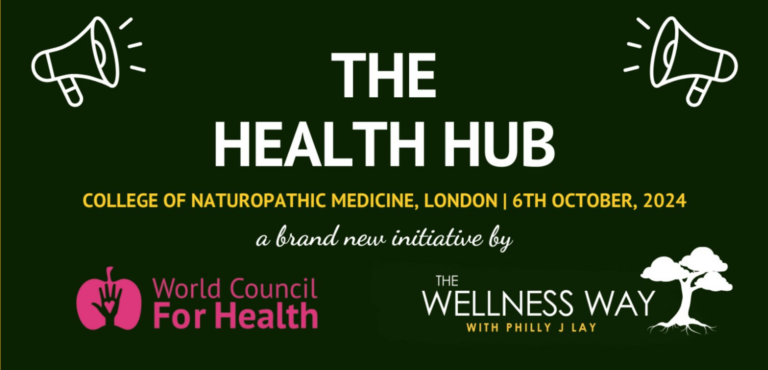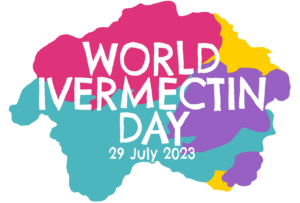Hello and welcome to today’s episode of Better Way Today. Today is amazingly the 10th of June. I can’t believe it’s already, we’re well into June and the Better Way Detox Fair is happening only less than a week away. Shocked by how quickly time is passing. We have a packed show for you today. We actually have two interviews with the same guest covering a host of excellent information. So let me just pull up our announcements and I can tell you more about it. Today we’re joined by Professor Karina Acevedo-Whitehouse. She’s currently an editor for the peer-reviewed journal Frontiers in Marine Sciences. Since 2010, she’s been involved in activities relating to science communication of diverse aspects of the COVID-19 crisis, which, among other things, includes publishing daily for 60,000-plus members the Akasha Comunidad channel on Telegram. She also has a bachelor’s in veterinary science from the National University of Mexico, a master’s of science in marine ecology from CICESE with a thesis on the ecology of infectious diseases and wildlife, and a PhD from the University of Cambridge with a thesis that integrated genetic tools to understand disease susceptibility and immune competence in wild vertebrates. She also had a postdoctoral research fellowship at the Institute of Zoology in London, conducting research on the genetic and molecular epidemiology of natural populations. Since 2010, she has been a professor of virology, epidemiology, and ecological immunology in Mexico. In the first conversation, she will be joined by Christophe Ploth. She will summarize the fundamental motives and content of her groundbreaking new book. And following this interview, we’ll be treated to a bonus interview all about the bird flu featuring Karina as well as Francesca Havens. But before we get to that, we’ve got a couple of short announcements for you. The countdown is on. The Better Way Detox Fair is happening this week on Thursday and Friday. Head over to Better Way events to learn more and get your tickets before it’s too late. This event is an excellent opportunity to learn more about how to detox from the many toxins that are not always easy to avoid in today’s world. What can you expect at the upcoming Better Way Detox Fair? Health guidance, receive information from expert integrative health practitioners on detoxification methods and practices. Stress relief, unwind with our 15 therapists as they offer donation-based sessions. Educational workshops, participate in workshops on topics such as nutrition, brain health, and frequency medicine. Product demos, experience demonstrations of the latest detox products and technologies. Wellness screenings, access free or discounted health screenings and assessments, including live blood analysis. Hands-on activities, engage in interactive activities such as dance, meditation, singing, and breath work in beautiful outdoor spaces. Exclusive deals. Take advantage of special discounts and offers on health products and services at the detox fair in the pharmacy. Delicious and healthy foods. Taste and sample a selection of delicious, healthy, detox-friendly foods and beverages. Motivation and inspiration. Gain motivation and inspiration from real stories in the speaker’s corner. networking opportunities, connect with like-minded individuals interested in health and wellness. You can also claim a free additional ticket for a vaccine-injured friend by emailing events at betterwayevents.org for more information. Next week, our guest is Tania De Jong. She’s one of Australia’s most successful female entrepreneurs and innovators, having developed six businesses and four charities. She also co-founded the Mind Medicine Australia, Australia’s leading nonprofit organization working on the use of psychedelic-assisted therapies to treat a range of mental illnesses and expand the treatment options available to medical practitioners and their patients. So that’ll be happening next week, next Monday, same time, same place. And the following Monday, on the last Monday of June, we’ve got another expert hearing. Christophe Ploth and Dr. Mark Trozy will be joined by a panel of experts to discuss the latest on where we stand right now with COVID vaccines. Stay tuned for more information about this important expert hearing and don’t miss it on the 24th of June. You can watch live in the WCH newsroom or wherever you’re watching us live right now. Jam for Freedom is coming up again. Their second annual event is happening in August. It will be bigger and better than last year. Enjoy four days and nights of 150-plus liberating performances, workshops, panels, comedy, and a lot more. There will also be children’s entertainment and activities. Camping and camper van tickets are available, including luxury glamping tents and concessions and free tickets for under-12s. Our very own Dr. Tess Lurie will join for a panel discussing the future of natural health, health policy, and medical choice. For an exclusive 15% off the final 100 tickets, use code BETTERWAY at jamforfreedom.com slash festival. The World Council for Health shop is stocked with all kinds of great things from supplements to books, books from some of our favorite doctors and authors, as well as WCH branded clothing, EMF protection products, and a lot more. Visit shop.worldcouncilforhealth.org to take a look and support our work. We’re pleased to announce that the World Council for Health now accepts cryptocurrency donations. We’re currently accepting multiple coins that you can see on the screen there. You can also find our QR codes and our wallet addresses on our website at worldcouncilforhealth.org slash donate. And of course, you can still donate and fiat money if you’d like. Thanks so much for your support. We truly would not be here if it was not for your ongoing support. And without further ado, I’m going to play our first interview with Karina and Christoph going over Karina’s new book. Hello and welcome to another episode of the Better Way interview. Tonight, I have the great honor and the great pleasure to have one of, in my opinion, one of the most beautiful souls on this planet at the moment in front of me. It’s Professor Karina Theodo Whitehouse. Thank you, Karina, for joining us tonight. A real privilege. Thank you. Thank you for this space. Well, as I already mentioned in the introduction, I don’t know too many personalities, especially in our time, that are still able to keep a human soul, still able to feel compassion for life and still to have a common sense. be very good in transmitting the incredible knowledge that you have. And therefore we dig in straight to what we want to talk about. It is about this. It’s about, I think, the most important book of our time of the last few years. And so thank you very much for having spent this time in order to create such an important publication. And you mentioned that you had been asked a few times whilst writing it why you were doing this and whether it was even fair to people to present all the knowledge that you accumulated. What is your answer to that? Yeah, well, I mean, I think it’s very important for people to understand. And I use that word very intentionally. It’s not only knowing, it’s understanding. what has happened, Christophe, the things that we have lived through these past four years, which obviously have a prior history, but I mean, it became very evident in these four years, are very, very severe, very life-changing at many different levels. And people need to understand what these products are, why it’s not correct to consider them vaccines, what it does to the best of our knowledge, because there are many things we still don’t know, many things in terms of their interaction with cells, with organs, with the whole body, how long these effects can go for. I think this is very important for people to understand. And as I say in the book, some people have said, well, yeah but we already have the vaccines on our body so why are you telling us this now well I’m not saying it now I tried saying this many years ago and some people listen but obviously it’s very difficult to get uh your voice heard when we don’t have all the apparatus working for us all the media is very very difficult is that at a very small scale that we can actually impact So I did say it at the start. Obviously, my understanding now is much more thorough. It doesn’t mean I know everything about this. Of course, I don’t think anyone does, but I understand more now than I did before. But I think it’s important for people to know even now, even when they can have these these products injected into their bodies already, because this technology, Christophe, is not only used or going to be used for COVID. that’s what’s really essential for people to understand of course these products these injectables are very very harmful not to everyone we are not mathematical equations there are many variations in how it can affect people and there are many variations between the different lots but so easy to make these products especially I mean the ones based on on mrna synthetic mrna it’s so easy and so cheap to make them that that is what they’re pushing for that all vaccines all the ones that we’re familiar with ever since we’re children I’m not saying that these are good products or not I’m not getting into that right now it’s just these products that we’re familiar with are going to be switched to this technology that is evidence because they don’t need to culture any virus they don’t need any sort of cell based organism in order to culture a virus, all we need is the sequence of a given protein or virus or bacteria or whatever. So it’s essential for people to understand that these products are gene therapy. That’s what it is. And words are very important, Christophe. I took time in understanding that, and I accept that, I acknowledge it. At the beginning, when I started speaking about my concerns with vaccines, and so we’re talking about more or less October 2020, and I started saying, well, I’m worried about these products that are gonna be authorized and that, i used to call them vaccines and some people told me why are you saying they’re vaccines or they’re not I said because it doesn’t really matter but I want this for people to understand that the products are not safe but it does matter for stuff because if people have been told um please come and form in line to receive your injection of gene therapy probably some people would have said uh no give me a second I’m not sure I want that by using a word that’s associated with safety I’m not saying that they are safe but it’s associated in the human psyche with safety it it made it more likely for people to say well yeah of course I’m going to do it because everyone knows that these products are safe so I think it’s essential that they understand the difference between a vaccine and what I call here in english I was able to do it in spanish there was no way of using that word vaccine that’s a term that I coined to to make it really really clear that these products are not vaccines I think it’s a very important terminology that you use in order to stress that even the definition of a vaccine had to be changed in order to fit into this safety label that had been created for decades. But that’s another topic. You also write in your book that you wanted to write a book to be understood by everyone, regardless of scientific background. Well, the first thing that I thought when reading this was to me, well, to me as well, when for the first time hearing that our body is going to be instructed to produce the pathogenic part of a virus, I said, hold on, what do we know about this? How can this, as it had never been done, be labeled as safe? So I couldn’t understand why especially, not everybody, but especially people in the scientific world accepted all of this as gospel. And one thing that I personally found, and I’d like to have your comment on this, is that Science has become so specialized that everybody seems to say, well, if it’s not in my area, I have to leave it up to the experts in that field and I trust them. What would you say? Why was, especially in the scientific world, the warning signs so clearly ignored? I mean, I don’t know if I have the answer for that, Christophe. I can tell you what I thought about it. For me, it has been a very rough awakening. For some reason, I think I was very naive in thinking that my profession, the academic scientific profession, which I have done with a lot of love and fascination. I love what I do for the past 25 years. I used to think that this profession was very open-minded because I said I was very naive. because it never has been. Scientists have never really been open-minded. That is why every time someone tries to change the paradigm, the scientific paradigm at the moment, they generally end up with a very, very sad future. I mean, they can be killed, they can be imprisoned. And I write about that in the book about Ignaz Semmelweis. I mean, he’s an iconic figure for me because he was a doctor and he is the one who said, well, hold on a second. I think that we as doctors are the ones who are irresponsible of transmitting birth fever. to women because we do an autopsy and then with our hands covered in grime and blood, we’re delivering a baby. So he said, we need to wash. And it was not met with open-mindedness from his colleagues, both doctors or medics and scientists at Wilson. They actually got really upset. The attitude was, how can you be telling me that I’m responsible for that attempt? And it was a long time after his very, very good insight that now we give it as a, I mean, we wash our hands, we understand hygiene is important, and it is, of course, but that’s just one of many cases in which you say, well, no, the scientific community is very, very not open-minded. Because I think, Christophe, and that’s my opinion, it doesn’t mean that this is right, there is a lot at stake at a personal level. Scientists, and I’m saying that as a scientist, we are very egotistical. We are. It’s a little bit like artists, just that we are artists in our mind. And we don’t like to be told that we’re wrong, and we like to be accepted. So for someone to break the paradigm and say, hold on a second, I mean, no, this that you’re saying is wrong. Look at this basic information. It doesn’t coincide. That is going to attract a lot of negative attention from your peers, a lot. It’s going to mean everything that you put for granted or that you really, really like to be accepted and to get grants and to be published, that could be in jeopardy. And I think that’s terrible for stuff because as scientists, We are really trying, doesn’t mean that everyone does it, but we’re trying to generate knowledge and knowledge changes. I mean, I was shocked to hear this phrase that became very, very common during the pandemic. They still say it, trust the science. That is the most unscientific phrase I’ve heard. Science is a process. So yeah, I do trust the process, but they make it sound as if knowledge, you need to trust it because what it says is what it is. And that is not true. If that were true, we would still do many of the practices that they did in the Middle Ages, in the Dark Ages, for instance, to be able to fight against smallpox. They would dress people in red, or the Persians would do that, or they would put people into a very hot room, put fire everywhere to bring out the demons. We would keep doing that because that is what the scientific consensus was at the time, and science is not about consensus. So I have found it very, very painful. I had lost friends, obviously, in the scientific community and out of it because they just couldn’t cope with the fact that I was saying, well um no I actually think that these products could be dangerous we don’t have information about them that was in the end of 2020 and it’s the truth we didn’t have information about safety and that was all I was saying at that point now we have information and I think it’s a crime this stuff that now for instance what just happened with astra seneca I’m sure you’ve heard of that it’s been in the news how many years later is astra seneca accepting that their product can cause There’s a pathology that’s characterized by blood clots and many, many problems within the body, depending on where you get these clots. How is it that now they’re accepting it when there were publications that go back a long time, even before COVID? And I talked about them in the pen and I do it. There’s a publication that was out in two thousand and five when we said, hey, hold on a second. A dental virus protein, for instance, can interact with the platelets and it can start causing a whole process of blood clotting. They said that we knew it. not only one publication, there are many. So how can it be that now there’s so many million people have received this particular product? Now they’re saying, well, yeah, you know what? It can, but it’s rare. I just find that terrible. And I find it even worse that my peers that were so against people like me talking and saying, this is worrying. they don’t have decency now to come out and say I was wrong is it so hard krista to say I was wrong I was wrong to say no it doesn’t matter if we call them vaccines or not I was wrong and I accept it I think it was very important I can also accept that I was wrong when people started saying well the mrna can integrate in the genome I think people started saying that like probably september 2020 and I heard about it and I said no that can’t be It’s mRNA, it’s single-stranded, it will not enter the nucleus, and the nucleus has DNA that’s double-stranded and it’s made of a different condition, not entirely, but they’re different. And I just dismissed it, Christophe, and I was wrong. I was ignorant of knowledge that has been out there since the 80s, at least, to talk about the process by which persistent RNA, that’s foreign, can become DNA. It’s not a magical process, they’re biochemical processes, and become integrated into our genome. So why is it that it’s so difficult for colleagues to say, yeah, I was wrong with this? Why is it so difficult for doctors to have the courage to say, I was recommending this product and I know now that I was wrong. And if that doesn’t change the stuff, we are not going to get out of the situation anytime soon, especially given that now, I’m sure you’re aware of that, they are trying to push the rhetoric now towards eating food. So this situation is not ending. They are going to continue it, continue milking it for all its worth with all the consequences. I mean, in the chapter with Samuel Weiss, you also quote Schopenhauer with a truth passes through three stages. First, it’s ridiculed, then it’s violently opposed, and then it becomes accepted as self-evident, as a sign of hope. I’d like to… I’d like to share that hope and see where we are in this stage but um as you said um so many millions have received astrazeneca but you quote in your book that 13 billion people have received uh some sort of covet vaccine and uh in inverted commas and that it’s 70.49 of the world population that has received it so In the chapters that you write, I’d just like to quote them to make people aware of what it’s all about in your book. And it’s mechanisms of actions of these different types of, as you call them with a different terminology, preclinical trials, adverse events, causal interference, physiopathology of adverse events, main adverse events, and what can be done to mitigate a very important chapter and looking forward to the future. And I’d like to come back to that. But what you just said is I wanted to come back to genetic integration at the end. But now, as you mentioned it, with even a peer-reviewed paper now that came out demonstrating the plasmid contamination 500-fold over the actual limit. And we’re not talking about normal DNA, we’re talking about plasmids. Could you explain to people what the difference is and why this should really concern us? And maybe as a second question, if there was any product out there that you’ve ever dealt with that showed a contamination of that size, would it still be on the market? Okay, well, I’ll go for the first one, your first question. First, please. plasmidic DNA being detected is that it talks about the process by which the these products these vex genes were made um so basically we have a very interesting scenario here that I still cannot understand why it is that lawyers in different parts of the world have not jumped up and said we’re going to make a legal case of this because what happened was in order to make the products that were injected for the phase one two and three clinical trials we used one process and it’s a very clean process very pure you generate mrna synthetic mrna in a very pure fashion okay so that’s what they reported and that’s what they used and that’s what they injected in these uh 22 000 something like that participants talking about sizer in particular But in order to make the products that were going to be used for the rest of the world, they used a different process. And that has a very important legal connotation, because in the information that was evaluated by all of the authorization bodies or whatever you call them there, I don’t know what it is, but the FDA or the piece of Mexico or that. they based themselves on the results that were generated by the first process. It is true that in that report, they did say they were gonna use a different process for the second one. So at least the company’s advisor could say, look, I told you, It’s true. There is a legal component for these agencies. Why didn’t that bother them? Because they had no way of knowing what were going to be the results in terms of safety and efficacy of this second process. There was no information. So they authorized the product. That’s not the one that was used for their population, for their citizens. And I find that, without being a lawyer, really surprising that there haven’t been more movements, more legal movements to say, hold on a second, I hold you accountable. I just can’t understand it. So that would be one aspect. But the presence of that plasmid DNA shows is exactly that second process. Because that second process, as I said, it’s not so pure, it’s not so clean, and it’s much cheaper. Obviously, they were just making the first one for 20,000 people. Now they’re going to do it for billions. So what they do is they use bacteria. They are very easy to transform genetically. Very, very easy. How do you do it? You insert plasmids. And plasmid is simply imagine a circuit like a ring. Imagine a ring that’s made of a double-stranded DNA. You can modify that ring, that circular DNA, to contain the genetic information that you want it to contain. So you can put the sequence written in DNA of the spike gene with other parts of that circular DNA. And that you insert it into E. coli. So they use E. coli for this process. And that is something that we use very commonly in the lab. It’s called bacterial transformation. And you can make bacteria then, every time that they reproduce, copy that plasmid. And you could even make them express that. But that’s not what they wanted here. they just wanted the bacteria to be copied many many times that plasmid and then they would lyse the bacteria destroy them it would cut that genetic ring and only stay with the sequences that they’re interested in and then with enzymes they convert that from dna into rna and then put the nanolipids and that’s it okay The thing is that the presence of DNA means that this process wasn’t well done. It was not cleaned adequately. It was not purified adequately. So that’s lots of another legal problem. It means that the quality control checks were not met. because it exceeds by quite a lot the limit that is allowed by the same agencies when they say how much DNA contamination can a product like this contain. It exceeds it by a lot. So that’s another legal problem. Now, in terms of biology, having the presence of DNA in those shots increases the chances of there being a very, very severe inflammatory reaction. That is known. There are many, many scientific papers of that, of the problems of having foreign DNA injected. But it goes beyond that stuff because now that VISTA that I’m explaining happened for Pfizer and Moderna. But the difference between Pfizer and Moderna is that Pfizer used promoter. And I just want to tell your public, a promoter is like, imagine the switch that allows a gene to be expressed. So when I say a gene being expressed, that means that from that DNA, you’re going to generate mRNA and then a protein, okay? But it needs a switch. That’s a promoter. So they use… And they’re ringing in that plasmid. They had a promoter to allow the expression of that gene. And that promoter is of SV40. SV40 is a virus, a simian virus that infects mammalian cells. remember that they were using bacterial cells. And there’s a very big difference between a bacterial cell and a cell that has a nucleus like ours, okay? Very, very different. They use different processes. So there’s no biological justification as to why they had an sp40 promoter, unless there are two scenarios. And I’m not saying that this is what happened. I don’t know. I’m not privy to Pfizer thought. The one option that’s the least bad option is that they have been developing, that I do know because it’s even on their website, they have been developing DNA-based vaccines. And for a DNA-based vaccine in the past, so before COVID, for a DNA-based vaccine, you need a promoter that allows the expression of that gene inside the mammalian cells. So they were using SV40 promoter. When the whole COVID situation starts, there was already too much information out there that showed that DNA-based vaccines were very unsafe. So they made RNA vaccines for the first time. It’s likely that they use these plasmids that they already have. That’s the best scenario for them. It was just a matter of, well, this is what I already had. I had millions of stocks of this product and I used it. I’m not saying that’s what happened. That’s the best case there. The other one is, there was an intention of this gene and its promoter having higher chances of becoming integrated within the nucleus of the cells. Because there really is no biological explanation for the presence of SV40. And I tried the best of my abilities to describe and explain what the consequences of that sequence being there are. But it’s not only that, even if they didn’t have that sequence, which would be the case for Moderna, the persistence of this mRNA that’s synthetic and modified within the cytoplasm, that can activate different elements within our cell that also make it likely for that material to be turned into DNA and integrated. So it doesn’t matter if it has SC40 or not, it makes it worse. But even if it doesn’t, we also have that situation of potential integration. And I use the word potential, Christophe, with a lot of seriousness, because we don’t know if it’s happening in people. No. is that in an in vitro experiment that used hepatic cell lines, they were able to show that the RNA becomes DNA and it enters the nucleus. That’s where they stopped their study. So right now we are starting a project, a research project, in collaboration with a hospital here in Querétaro, where I live, and my university, in which we’re trying to search for evidence of integration in sperm cells. And that would be terrible. I really hope we don’t find it, because if we do, it means that, yes, this process is happening in the organisms and it’s reaching. sperm cells. And I don’t know if I’m making it clear what that would mean in terms of new generations of humans. Well, there are a few projects like yours happening at the moment all over the world. And yeah, it will not only be important for potential legal steps, but it will be in fact very, very essential for humanity as a whole. So thanks for doing this project. It’s probably the most important one we have at the moment. And let’s maybe dive into one of the other chapters in your book, because we now see since 21 rises of a whole variety of health problems all over the world. at the same time so of course everybody says correlation is not causation but um if uh there are there bradford hill criteria in statistics that you can use uh in order to to show a causation and many speaks for at least to look at the potential um a possibility that the rollout of this injection was responsible for many health problems Maybe just to take two that are the main topics. Is there any possibility to show any causation link to the problems in the cardiovascular system that we see, especially in the young? And the other one would be cancer. What is your opinion? Are we able to show our causation with these two new pandemics that we see all over the globe? Well, it’s very difficult to prove causation. Experimentally, for instance, that’s considered like the gold standard. And when you want to prove that something causes something, I would say in a way it’s already happened because experiment is with the people that were infected. But if you want to do it in controlled terms with a proper control, blind, et cetera, well, that has legal limitations. You’re not really supposed to do that. In a way, the phase three experiments were about that. But what happened? They vaccinated the control group. So we lost that. And I think that that was a very calculated move. They said it was because it was inhumane to not have them protected, et cetera. Even if you know that these products do not confer protection, you can get infected, you can transmit it. But anyway, that’s what they said. So going back to your question, yes, we can prove it because most of the criteria at Bradford Hill are covered for cardiovascular events. We already know the biological mechanisms. There are a lot of studies already published, peer-reviewed studies that have shown how it is that these products cause inflammation, how it is that they biodistribute to different parts of the body, including the blood vessels that nurture the heart and the heart itself. So then you can go into things and understand, well, yeah, then it will cause inflammation of the heart. The heart does not regenerate. So the muscle cells of the heart are one of the parts of our body that do not regenerate. They just become really, really hard once they die, those cells. So having inflammation leaves a permanent mark. And that is why it’s so common right now to see people that are healthy, athletes, that suddenly have a very strong demand, a cardiac demand, and suddenly they just fall back or they have a problem, a serious heart problem. because you cannot contract your heart like you used to do it. So as long as you’re calm in your house, watching the telly or whatever, you’re not noticing that. But the moment you need more oxygen because you have a very strong physical demand, then that’s when you have a problem. So biological plausibility is well known. There are loads of papers about it. In terms of the other criteria, they’re all also So I think it’s very, very difficult to understand how it is that epidemiologists, that clinical medical doctors are not saying, hold on a second, look, I don’t know if it is the vaccine or not, but I notice a difference in my practice. Say that in the number of patients that have these problems that didn’t used to have that and coincides exactly with the turn of these products. And epidemiologists, how it is that they’re ignoring all these links when it was so easy for them to accept these same links for COVID. Exactly the same. It was just, okay, the PCR is positive, then it’s obvious that this is the cause. So we’re talking about a very hypocritical viewpoint, very, very hypocritical. again I I am really saddened by what that means by my profession because if doctors and if it’s scientists don’t come together and start saying you know what this is wrong it’s going to continue and the the problem without the cost is that they’re human lives for stuff it’s really sad they’re human lives they talk about it as if they’re numbers but they’re not numbers they’re people with a life with other things that love them, with history, and that has been lost and it’s terrible. Well, I fully agree. And it leaves me speechless each time I think about it. And well, one very strange thing was right at the beginning when I was talking to pathologists that they were not allowed to autopsy people whilst they had been doing autopsies on people with Ebola and other things. So definitely, The threat of the disease jumping, and very unlikely, by the way, if it wasn’t exhaled, to jump from one human to another one was another thing. Even the latest peer-reviewed publication around Peter McCullough on the autopsy finding was retracted. So even if you don’t, you mentioned a few theories about why nothing is happening or why things were put into these injections that shouldn’t be in there. It’s another big question mark, if there would be a chance, because you could see with Professor Burkhardt and others, the damage, and they could identify there was the spike of the vaccine and not the native spike that caused it. We do have the possibilities, but I do see also in daily life with all the people that come here with cardiovascular problems that the standard tests fail to detect anything. So we literally have to wait until they drop dead in order to do something. And this is hardly ever done. So not excusing anything because they investigate all these patients and say nothing is possible to be detected. So they’re all fine. But you mentioned jumping to the future, maybe from here, of all these vaccines that we are surrounding with. You talked about 165 trials of mRNA injections. And I’d also like you to maybe say a word about the self-replicating vaccines, because many people don’t know what this means. So I just encourage all the viewers to look at your book, go get it and discuss it. Give it to your doctor, give it to your GP, give it to your specialists. And so they have the information because another thing that we could be talking about for ages now, is the heavy censorship for that has been rolled out for the last few years and it’s virtually impossible to get any true information so books like yours is a are a rare chance to still get an overview so yeah what is your take if you already you already pointed that direction that we will see All these mRNA cheap vaccines are quick to be made. We can see that coming to us. What’s your take on it? I mean, not necessarily cheap for the countries or the public, but they’re cheap to make for the pharmaceutical companies, so then they get a lot of money with that. But yeah, I mean, they saw the, we would say in Mexico, the hen with the golden eggs, and they’re not going to let go of that. But the problem is that technology, the mRNA, the synthetic modified mRNA, that earned a Nobel Prize last year for two scientists, precisely for those modifications, that is what’s tremendously damaging for the human body, tremendously, for any life, actually. So using that technology for any other product, for any other genetic vaccine, for any sort of treatment, has many, many negative effects, many consequences. So let’s imagine for instance that someone is very ill and maybe with conventional medicine, they say you have one year of life left. And there’s a product, an mRNA-based product that can help. Maybe I would say, well, go ahead. I mean, anyway, you’re so ill, chances are that’ll help you. But here they’re injecting that technology into healthy people. That makes all the difference. It’s completely different. The criteria you need for considering safety when you’re talking about something that’s preventative, supposedly, or something that’s therapeutic. It’s completely different. So they’re now using this platform for virtually anything. I’m not saying they’re using it as in you can go out and buy it right now, but they’re already in those trials. They’re trying to push that. And it becomes even so superficial as to developing this product in order to avoid wrinkles, facial wrinkles. Why? Because you can get the gene that codes for collagen and you can inject it as mRNA with nano lipids into the skin of people that are older because they already lost a lot of their own production of collagen. So you’re giving them So the person will suddenly lose their wrinkles. Do you see how superficial it will become? Gene therapy to avoid wrinkles, really? Is that what humanity in the 21st century is accepting? I just find it astounding. And they’re even actually talking about this technology to treat cancer. And I find that terrible because this technology is one of the causes of cancer. So it’s a circular reasoning, and I just cannot understand it. And that is why, for me, this book was so important for people to know what these platforms can do. As I say, it goes beyond COVID. Of course, the spike protein has a very important role in this, of course. But take away that protein. Put another one in there. You still have many of the effects of mRNA. many and I’m focusing on mrna because honestly I do think krista that this that’s happening with astra seneca and the news items that we can find since mid 2021 for a different country said no no we’re stopping astra seneca we’re stopping jensen it has been part of the plan I honestly think so and and I mean again this is my opinion it’s almost as if okay they’re going to accept that some of the products had problems but they’re never going to touch the mrna ones which is ridiculous because actually the number of adverse events that are associated with those products, with Pfizer and Moderna, are even worse than the AstraZeneca and Janssen one. I mean, not saying that that means that the other ones are good, of course not, but it’s just very hypocritical that the others are not finished. And I find that very logical from a perspective of, well, that’s what they want to be out there as a technology for literally anything. So if people understand that, if they understand what the problem of that platform is for ourselves, for our body as a whole, for future generations, then maybe, just maybe, Krista, we can stop this. Because I honestly think that we have forgotten as humanity the power of our own ability to say no. We had said no to many of the arbitrary and ridiculous, not substantiated laws that they passed in some countries or just simply decrees or whatever you want to see. If we had said no, we wouldn’t be where we are now. What happened? There was a lot of fear. And I can understand that there was a lot of fear. And when we fear, we cannot think rationally. And they know that. And when I say they, I mean everyone that’s behind this whole thing. That’s obvious that this was very well planned, very well thought out, the whole thing that has been happening. So I think that if we have knowledge, it’s easier for us to not be afraid. For me at least, knowledge is like, it’s the equivalent of turning on the light when you’re a kid and you’re terrified in your bed in the dark room. You turn on the light and suddenly there are no more monsters. It’s the same thing. Knowledge is there. turns on the light and fear cannot be there. And if we don’t fear, Krista, then they cannot pass these ridiculous and arbitrary measures. So that would be it. And I want to thank you, Krista, for this opportunity and also for your words, which inspire me to write the English version, because this book, as you know, I wrote it originally in Spanish. um for me it’s almost as if it were another phd thesis because it took me four years of research virtually and it’s nearly identical in length to my phd thesis so for me this is another for me wrote in spanish because there’s not a lot of original scientific literature in spanish and for even legal purposes you need that So that was my intention. And I was just going to leave it in Spanish. And you told me, when is the English version coming out? And I said, thanks for that. It’s a lot of work. And I don’t have the money to have a professional translation. And again, I said, well, you know what? You’re right. So I did it. And I did it over the whole few days. I’m never going to do it somewhere like that again. It was merely like writing the whole book in French. But I thank you for it because I think it’s an important book. And I’m really not saying that from ego. It’s not because I wrote it. It’s not that. I’ve really tried to put a lot in there and to make an effort for people from any sort of background to be able to understand. So there’s a glossary. I put footnotes. Everything is referenced. I really try. I’m not saying that I manage to do it all the time, but I try to make it very understandable. And I thank you for that, Christopher, for that question that sort of led me in the direction of, okay, okay, I’ll translate it. So thank you for that. Not to spoil your future vacations, but I could ask you in how many other languages it’s going to be translated in the near future. But I hope it will be done. So please, all viewers, get this amazing book. As you listen to this, you are capable of speaking and understanding English, so please use the opportunity. to support this amazing work. And at the beginning, I didn’t quite see the graphic behind it. And you just said, step out of the fear and go into the light. And I think this dark book is actually a wonderful light. that can get you out of fear because it’s empowering. So thank you so much, Karina, for all you’re doing for this work and the current project that you’re doing. And yeah, I’m deeply honored to have spoken to you here now. And thank you so much for everything you are. Thank you, Christophe. A big hug to you. Bye-bye. That was a great interview. Thank you to Christoph and to Karina. I’ve put the link to her book, the English version, available on Amazon into all of the chats in the places that we’re live streaming. I will also add it to our website. In case you revisit this interview later or share it with someone, you can find that book. The link was also up on the screen there for you. And for anyone that’s just joining us now and may have missed our introduction, we actually have two interviews with Karina today. It’s a lucky day. Next, I’m going to play an interview with Karina and Francesca Havens, and they’ll be discussing bird flu. So without further ado, let me get that one up. Okay, so Karina Acevedo Whitehouse, it’s such a great pleasure to speak to you again so soon after Christoph Plother spoke to you about your absolutely amazing and detailed book. But on this occasion, we’ve agreed to discuss your tremendous insights as a veterinary researcher into all of the discussion that there seems to be today in the mass media around avian influenza. And so I had the privilege to be able to view the interview that you held with Patricio Villarroel of Chile, who’s another excellent trained veterinary researcher and who I’ve had the pleasure to meet as well. And so your discussion was extremely interesting and we wanted to bring that forwards to the English-speaking public, also making available a link obviously to the Spanish for the Spanish-speaking public. So the question is that you looked at extensively in your video is, Is it or is it not possible to create a pandemic with this H5N1 influenza virus strain? And so just as an introduction, can you give me just a very quick summary of your findings on the matter? And then we’ll go into some more questions. Sure, Francesca. Thanks for the invitation. I really thought it would be very nice to see you. Well, I think the answer to your question would be it really depends what you’re defining as a pandemic, because you said it wouldn’t be possible for H5N1, this particular clade that we’re talking about, that’s 2.3.4.4b, that’s the clade of this, what they’re calling highly pathogenic avian influenza H5N1. Is it possible for that to become a pandemic? My response is, if you define a pandemic and you define a case as they did for COVID-19, well, yeah, of course, it’s possible for them to do that in any moment. But if you define it based on the possibility of that particular virus, crossing the species barrier from birds to mammals, sustaining transmission in one mammalian species, and then jumping from that mammalian species to humans, sustaining transmission there, and then disseminating throughout the world? It’s very unlikely. In science, we try to avoid, or at least I try to avoid, absolute term. So saying it’s impossible, I prefer to avoid it. But it’s very unlikely. The chances of that happening naturally are very, very, very low. You could probably ignore it. But if we define the pandemic based on PCR detection of a small fragment of one of the viral genes, and with very, very high number of amplification cycles and PCR, exactly the way they did it with COVID-19, well then, yeah, it’s likely that they’re going to start finding cases and then we’ll have a pandemic throughout the world. I don’t know if you see where I’m coming from. Yes, I absolutely understand. And so the thing is underlying that, and I want to come back to that, you know, possibly a bit later on, you can summarize the reasons why for the public to understand why it’s very difficult to have this, you know, zoonotic jump between the species in this case. But first of all, I wanted to say, I mean, how confident are you about these official announcements of humans having caught avian flu areal, given the extent of the manipulation that we’ve just referred to during the COVID-19 pandemic? I’m not confident at all at all but I mean it’s not a matter of belief or just my intuition tells me no it’s simply that that has not been established So can I raise the issue that you mentioned in the latter part of your interview with Patricia, which is there was the incident of a young man who got conjunctivitis and this was interpreted by the media generally all around the world as avian influenza. which to me seem very odd because, you know, I’ve got, you know, I’ve seen my own children with conjunctivitis and there’s, there was nothing really else to be able to establish that it would. So could you explain, uh, the, the details of that? Because it helps people to understand how perhaps what we’re hearing in the mass media is not actually, uh, fundamental on anything solid. Yeah, of course. Okay, so in order to explain that, I’m going to go back a couple of steps and explain the basics of these influenza viruses. Please. Influenza viruses, they belong to a family that’s called Ortho-Ognyxoviridae. They’re very particular viruses in the sense that although their genome is, again, RNA-based, so that would be similar to SARS-CoV-2, they are segmented, so they have fragments of genome. It’s not continuous molecules, they’re different segments. So that makes them very particular, but it means also that you have the possibility of recombination So if you have a simultaneous infection by two different virus subtypes, then you can get those segments sort of combined. So it would be like very, very similar to the end result of sexual reproduction. You get this combination. So that’s a very important part of these viruses. We have four different influenza types of viruses. You have A, B, C, and D. and those are largely defined I mean they have genetic differences and so forth but the types of host animals that can become affected with these viruses vary and when I say infected I don’t mean sick that’s very important that people understand that being infected and having the virus in your cells for a while doesn’t mean that you’re ill but that has to be understood So then the cells that can become infected with these viruses, with or without disease, vary in terms of the receptors that these cells have. And that makes it rather difficult for these viruses, the different types of viruses, to jump between animal species. So if you just allow me to share one slide here. Oh, please. Go ahead. Here we have… what I’m trying to describe. We have influenza A, B, C, and D. And you can see here the different species that are known to be hosts to these viruses. As I said, that doesn’t mean they’re sick. It doesn’t mean they have to die at all. So then, for instance, humans and pigs are both hosts for influenza type C viruses. And influenza B is humans, pigs, and seals. Influenza A has a rather larger host spectrum. with many birds, birds are particular hosts for them, but you have some mammals here. So you have whales and dogs and cats, horses, pigs, humans. And then we have influenza B that’s mainly ruminants, horses and pigs as well. So those are the viral types. What we’ve been hearing about quite a lot in the media is about influenza A, but that’s just the type. Within that type A, you have many subtypes. Stop me if you think I’m going too fast with this because this is really, really important for people to understand. So within influenza A, it has a very wide host spectrum. You have many subtypes. And those subtypes are defined by something that’s rather interesting. I’m going to go back to this in a second. It’s defined by the type of H protein that they have and the type of N protein that they have. And I’m sure this is in Spanish, but I wasn’t expecting to use the slides. So I’ll just explain it here. So there are different proteins in the virus. And one of them is hemagglutinin. we can talk about it like an H, and neuraminobase, that’s an N. So the subtypes within type A are defined by the type of H protein that they have and the type of N protein that they have, okay? So that defines the subtypes. We have many different subtypes within influenza A. The attention from the media has been placed on influenza A, H5N1. That’s the subtype, okay? I think the subtype influenza A, H5N1, they’re talking of one particular clade. People will see that in the news, clade 2.3.4.4b. And that would be the equivalent of, say, an Omicron, for instance. So it’s like a variant of that particular subtype of influenza. Right. So why is it, I’m gonna go back here, that influenza A, that’s the type, we have many different subtypes in there, can be in birds and can be in bats, et cetera. Well, that’ll depend on the subtype that we’re talking about. So when we talk about influenza H5N1, that’s influenza that’s very common in birds, we have to look at this. So what we’re seeing here in the left part of the panel, we have the representation of a protein that several epithelial cells have. So when we think of our body, we have mucosa, we have the skin, we have epithelial cells that are covering it. And those cells need to be communicated with many other cells and have proteins on their surface, right? So this sialic acid, galactose, this is a glycoprotein, meaning that it’s a protein, this is the protein part, and this is a carbohydrate that’s stored in here. So it’s a glycoprotein, sugar and protein. Many cells express it. So we could say, well, sialic acid is the receptor for influenza A-type viruses, right? But it depends on the type of sialic acid that we have, Francesca. So here you can see it. Carbon number two of sialic acid is joined to the carbon number three of galactose, right? But it could be joined in another position. What type of protein joined with the sugar that’s here is what H5N1 needs in order to affect. Okay, so it’s considered, we’re going to talk about this like an alpha two comma three. What it means is that this carbon is joined with this carbon, right? And that is what avian flu H5N1 needs. But we don’t have, as humans, we don’t have this type of joining. We don’t have 2,3 in our Cialic acid and galactose. We have 2,6. So then here we have, we have a quantotype explained here. It’s represented 2,3 linkage. That is what birds have in their epithelial cell. And avian flu H5N1 needs this type of linkages. linkage humans have two comma six okay so that makes it very different difficult for these viruses h5n1 viruses to be able to infect human cells I’m not saying it’s impossible I’m saying it’s very unlikely why is it not impossible because we are not mathematical equations francesca humans have mutations occasionally that can lead to possibly being susceptible to this virus, but it would be very unlikely and even more unlikely for that unlucky individual to be able to transmit it to other humans. Does that make sense? Yeah. That is known. You know, it has been known for a long, long time, a long time. We know that that determines why avian flu is so unlikely to infect humans and then disseminate. So then. Go back here. That defines, for instance, that humans tend to have H1N1. We can have H5N1. Yes, as I said, it can happen in one or two humans. And you should, those cases that they talk about, it’s exactly that. One human that becomes infected. Two humans that have signs that could be compatible with h5n1 and then that’s it because we don’t have that type of receptor widely distributed we just don’t have it we have another type of receptor okay so then that’s that’s really important that has limited the type of infections that can happen now I’ll stop sharing here I’ll explain a little bit more about this occasion So then we’ve been hearing for some weeks, quite intensely, that now there’s another pandemic potential of H5N1, and we’re talking about this particular plate, the one I said, 2.3, .4, .4b, that it has now been able to jump from birds to cattle, and dairy cattle, and then infected the milk, and that milk has been able to affect cats and humans, okay? I want you to understand, Francesca, is that this that they’re saying, this narrative, is very unlikely, so unlikely that it’s actually funny. Because you have to have so many evolutionary events happening. We ought to explain that that particular clade, and I’ll come back to that clade in a second, but that particular clade managed somehow to do something it hasn’t been able to do for years, actually. People have been trying, scientists have been trying to infect cattle with H5N1 viruses for some time now, and they never can. Cattle are not susceptible to H5N1 subtypes. And they have done challenge experiments, Francesca. I’m not saying just go and see what cattle have. No, they have done challenge experiments. So sorry to interrupt you, but could I then ask, because anyone that’s been following what’s been going on for the last four years, will be very curious to say to you, but Karina, what about gain of function? Because that’s what we saw with the coronavirus and suddenly it was super contagious and it had this odd furrowing cleavage site in the wrong place, never seen before. Could you comment on that, please? Of course, and that’s why I said at the beginning, responding to your question, this is very unlikely to happen naturally. Removing the part of any type of intention of doing gain-of-functional studies, which is really genetic engineering. Removing that, this is very unlikely. So let me continue with this kind of explanation I’m giving, and then I’ll go back to the gain-of-function part. So then, as I said, the explanation that they’re giving is actually funny, because it’s so unlikely for that to happen. So what they’re saying, again, is that wild birds that harbor H5N1 highly pathogenic subtypes is something that has not been able to occur in the wild. I said never, okay? So cattle are simply not susceptible. If you look at the literature that explains host susceptibility to different influenza A subtypes, you will see that cattle simply doesn’t appear in H5N1 despite challenge experiments. They just cannot become infected with this virus. So suddenly, magically, it happens. That’s what they’re saying, okay? What do they base themselves on, saying, well, now cattle is infected? PCR, and I’m going to show you the results of the PCRs, because I think it’s really important. That’s what I have tried throughout these years to train people in PCR, that they can understand what PCR does and what it doesn’t do. give me a second here and I’ll show you again sorry that it’s in spanish but I think it’s going to be quite easy to understand these are the results on that paper that created this whole uh problem okay we’re talking about al 2024 and emerging infectious diseases and here are the results sorry about this here we go So we have, these are the cases, cow number one, cow number two in one place in Texas, cow number one, cow number two in another ranch in Texas, cow one and two in another ranch in Kansas, and one cow in another ranch in Kansas, another one here in another ranch in Kansas, and they took the cows, okay? I need people to understand that they’re talking about eight cows, eight cows and two cats. They were not talking about hundreds of cows, no, no, no. Eight in different ranches. different states texas and kansas okay right so they did pcr tests for influenza a general five subtype and then specifically for this state okay so they did three series of pcrs and what they said is if we didn’t manage to amplify anything there was no evidence of this virus being there then we won’t continue doing the pcrs okay so na means that they didn’t they didn’t have it available it wasn’t any sample milk here they found this fragment of these viruses, this viral type, in the mammary gland, and also H5, and also this subtype, okay? And these numbers represent the number of cycles that they were doing on PCR. And generally, the week past 30 cycles, those results are meaningless from a clinical perspective, okay? So we could say, well, actually, they didn’t have in the mammary gland evidence that these viruses were present, that H5 2.3.4.4 was present, all right? But couldn’t that be because the cow is in the same stable as some chicken or something? Yes, of course, and that’s what we’re going to get to. So we have one cow out of the eight, one cow that they found evidence, of one particular genetic fragment of each type this time. But they never state, they never state whether they used, which part of the mammary gland they used in order to do this test. And these cows can very well be exposed to guano, that means the feces, of the birds. It’s very common. I mean, I’m a vet. I worked for a while when I was studying in farms, and that’s very common. You get contamination. they did absolutely no attempt to discard contamination and it’s one cow so we’re basing our fear on this result that’s one cow that didn’t discard any contamination with feces out and I mentioned feces because birds eliminate influenza a viruses through the feces not through sneezing or anything like that it’s not respiratory in them it’s fecal Oh, that’s interesting. Yeah. That’s important to know. So then we also have it in the milk. So we have this cow having high levels in the milk. Remember that the lower this number is, it means the higher level of viruses you have, the second verse. So we have low values here. Again, this is milk. You have no way of knowing whether when they were taking the milk sample, there was contamination from the other. They didn’t even mention it, Francesca. It wasn’t a single attempt to explain it. And we have absolutely no explanation for how that infection would have occurred in order to be able to successfully infect milk. Why? Because we’ve known for years with published studies, studies that went through a peer-reviewed process for years and years, that cow milk has many molecules that inhibit hemagglutinin. We know that. So how are they trying to explain that this virus somehow managed to do a feat that hasn’t happened ever, and it managed to evade all of those molecules? This is not only one, they have many different types of immune molecules that inhibit the protein that this virus needs in order to infect. And they didn’t discard that this could simply be showing contamination with bird fecal matter, even minute particles of bird fecal matter in the meal. We don’t have any evidence whatsoever of cows having a problem. People say, well, no, but they have it in lung here. Yeah, with 40 cycles, which doesn’t mean anything. Right. these with very high cycles it doesn’t mean anything clinical because these cows francesca they have needed in their favorite have no clinical evidence of disease except to me it’s called mastitis this means information of the memory gland Can I just step in there and interrupt you just briefly to remind everyone that there was such a big issue around the number of cycles of magnification in the PCR test during the COVID-19 pandemic. And what that meant was that if you had more, at least in the UK, it was stated that if there were more than 27 cycles, then it definitely just showed any detritus, any cellular detritus, and it couldn’t possibly show a coronavirus fragment. So can you just explain that in your more scientific terms so that people remember that as to what’s going on in this study? Sure, of course. So it’s really just for making copies of the entire fragment. That’s what it means, polymerase chain reaction. But for methods to make copies, that was so important, and that’s why they got the Nobel Prize, the inventors, including Harry Mews, because it was very useful, because maybe you want, for biotechnology purposes, to have many copies of a particular gene. So this is a very cheap way to, in the end, make many copies. Basically, you’re using the same method that the cell uses normally in order to copy its DNA. Here, you’re making many, many copies, and it’s exponential. The cycle that you run, you’re going to have a lot more material. That’s why the more you run these cycles, it means that you have less starting material. If you can detect the fragment with a couple of cycles, that means that you have a lot of material to start. That’s why it’s inverse. But the problem with PCR, it’s not that this is a rhyme method. It’s a very good method for what it was made for, for testing. Not a test. It’s not a method that was designed in order to diagnose disease. Not the intention of PCR. Can you support that? Yes, you could, with a lot of clinical validation, which hasn’t been done. I found this problem with COVID-19, Francesca, they use the test that is not made for them. Even if you do it with very specific primers, that means the fragments that you’re sort of like hoping that will taste on that sequence that you’re looking for, they’re very specific. Nothing else happens. Even then, if you amplify, if you manage to detect fragment after 40 cycles, it’s meaningless. yeah so to summarize what we’re seeing here is basically a repeat of what happened during the coronavirus pandemic where they’re sort of saying that animals are ill which are showing no symptoms so it’s like suddenly even when you’re not ill you’re ill just because a pcr test says so so we’re not there’s no longer any common sense it’s a so-called science plucked out of thin air yeah exactly and for me it’s really surprising anymore because it’s not surprising we’ve been living this for four years but yeah because I mean during my my scientific training and my career as a wildlife veterinarian this is exactly what I would do with disease and wild populations and trying to understand what factors make animals uh who are likely to be ill or not I have always all rightly so that you cannot simply find something evidence of a gene fragment of microism and say this species is not infected you cannot do that concept you need evidence and here that’s exactly what they’re doing so they’re saying because we found a couple of samples of middle have had the presence of these gene fragments, that means that camels were infected. But they haven’t shown that. They would not show infection. It can very well be contamination. And that leads us to Autumn’s razor, if you’re familiar with that. Well, I was rather amused when you were pointing out that the case for the domestic cats in Texas was that the cats died when drinking milk from hospitalized cows. And your question was like, well, if cows were hospitalized, why were the cats having access to that milk? How could they have access to that milk, right? It’s very confusing and it’s really helpful for everyone for you to unpick this. Yeah. It’s sort of like trying to find causal relationship between things. So it’s sort of like if you walk into a room and you see a ladder, and someone’s thrown down on the floor, unconscious, with a laptop in his hand, and there’s no light bulb up there in the room, You can think that would be the most logical thing, or this person fell on flat, hit his head, unconscious. But if he’s standing in the room, in that same room, a book, and a candle, or just inventing these things, it wouldn’t be the most logical thing to think, well, yes, this person read that book, and then turned on the candle and the candle had a very toxic fume and while the person was up in the ladder that fume went up and intoxicated the person and all because his mind was on the book that he had just read. You see my point? It’s like, well, that’s not something to see. What’s anything got to do with anything? So to put some more emphasis on this very problematic issue with PCR tests and designating people being ill when they’re clearly, you know, cows or cats or humans look perfectly well. You mentioned in the chat with Patricio that the person who had conjunctivitis, they showed photos in the mass media all around the world of this man with very red eyes. And you explained that they had tested this person for H5N1, even though you can see that his eyes had conjunctivitis and there was no mention of any other symptoms, and that they proved it through 33 cycles of a PCR test. So how many cycles, if you had wanted to really prove that there was H5N1, what would you put the maximum number of cycles that they might have used? I don’t think that it would be correct to say, well, this is from here, then you say this person is infected, and you don’t know. It’s a proper study with controls, which they’re not using here, in order to determine in human cells and then in an animal, how many of these PCR positive samples a number of samples connection leading to a viable cell that can be cultured or viable viruses that can be cultured themselves so I refuse to say well you need 18 cycles or whatever because that’s not the way it works it’s out of those cycles how many actually showing viable variants, and that hasn’t been shown here at all. So what haven’t they shown? They haven’t shown that the cows were infected. They just showed that in a couple of samples, in a handful of samples, they were able to amplify fragments of this virus, which cannot, that does not discard, it cannot discard contamination. They haven’t shown how it is that that virus would have been able to maintain viability within cow milk. Well, we know from many publications that cow milk has molecules that inhibit hemagglutinous. So they didn’t show that. They haven’t shown transmission from milk to the cats. Cats, we know are hosts of H5N1. We know that. Most parsimonious explanation is they ate birds that were infected. Because that was actually being shown in the past, but no, they just jumped and said, well, they drank milk that was infected. But could I even ask, if a cat eats a chicken carcass, or if a cat eats a wild bird, is that necessarily going to mean that the bird was infected anyhow? I mean, the bird is a host anyhow, so we’re all hosting bacteria and viruses, correct? Yeah, exactly. Otherwise, the PCR always does show you that there’s a presence. or lower abundance, depending on how many cycles you’re in, of that gene fragment. That’s all it means. It doesn’t mean infection. And even if it is infection, that doesn’t mean that you’re ill. What I’m saying is that it’s much more parsimonious to think, well, cats did what they’ve been doing for years. They predated, they ate. really well that happen to have each five and one and that is why you can be affected by pcr and that’s it it doesn’t mean anything else that we’ve already known for negative special scale and then they haven’t shown that from the cow was able to jump to humans right they haven’t shown why it would cause something divided and not anything else and just simply ignoring the fact that it’s very likely in a ranch and bean berry products should touch their eyes. There are several material birds, and then I run a PCR test on that. I’ll be able, if that bird had a private experience, I’ll be able to detect it. And it doesn’t mean anything. And it was actually quite funny also to read that paper. So this was a paper report that came out in the New England Journal of Medicine that had that picture that you’re referring to, that very, very red eyes, symmetrical vision devices. And hey, the test did well. A couple of days, a couple of hours, two days. Without, I mean… What sort of influenza disease would that be? In two days, you’re fine. They had absolutely no other symptom, except for coronavirus. And that is enough evidence to start this whole pandemic scare anew? Well, what’s interesting, what is interesting about it, which you also pointed out, is that the news articles in the mass media, when they weren’t showing a man with very red eyes, were showing uh the actual the sars-cov mock-up virus shape with a chicken next to it so we’ve suddenly gone away from bats and pangolins and suddenly we’ve got this whole like mental blending of sars-cov virus now it’s chicken they didn’t put cows on the uh thing but they put chickens so um at the end of the day many people have levied the accusation that they’re actually trying to reduce our food supplies by killing so many birds that supposedly have avian influenza because it’s now going to jump to humans and et cetera, et cetera. So it’s a, it’s a, it’s a serious issue. Yeah, very serious. I mean, just the problem with that kind of thing, referring to this type of image, let’s see. Here we go. Was that an earthquake? Yeah, so this is news. When I saw it, I said, well, this is a bit funny because birds are not infected in their respiratory tract. In any case, they would have to put a bird in any case. But they actually use images that make people fear, once more, respiratory infection. Which is valuable. Sorry, well, people were very traumatized by the whole everything to do with the pandemic the isolation, the masking the. Set you separation from loved ones, so I think a lot of people have been actually deeply traumatized especially children and teenagers and if they start seeing images like this, I can see how that might. be deliberate to provoke fear so that people go back into that you know the fear response and they’re not uh you know they’re just going to accept anything they’re told to do possibly absolutely or this one for instance that came out in a in a journal uh and it has a bird and then you have science kobe 2 of what we’re talking about influenza also I said they can’t even get the virus right there’s the possibility that this is actually intentional, because as you say, this image has been in the psyche of humanity for four years. So, of course, if you use it and now you put a domestic bird here, you can very well start a lot of fear of people towards this new potential in the McGlanders, which, as I explained, is very unlikely to happen naturally. Now, let’s go back to your question about the annotation. If they’ve done experiments and gain of friendship, which we know that they’ve used these types of viruses to do it in Wuhan and in other labs across the world, then it makes it more likely for this to happen. But it’s not natural anymore. And that, I think, has very strong implications in terms of legal aspects, Francesca. And I really think lawyers need to start getting their hands into this, because what that would mean is something that can be a potential or not, but it has a non-natural origin. So it’s sort of like water quality is going to go through another chance. It’s actually caused by science that couldn’t be done. If science can be done, doesn’t mean you have to do it, doesn’t mean you should do it. But it is a possibility, of course it is. But what I would like your viewers to remember, Francesca, is that I really mean this. Life is much more resilient. So even if there is gain of function, though, it doesn’t mean that that would actually burn like wildfire. They’re completely ignoring ambition. It sounds like they don’t understand it. We could see it very, very clearly with SARS-CoV-2. So it started out like something that many people were becoming infected. And yes, of course, it was affecting mostly people that were elderly, that had concomitant diseases and everything. But sure, okay, mortality, even if we believe the way they diagnosed it, let’s assume that that was right. It started relatively, relatively high level. And then it went down, down, down, down. Virulence went down. Why? Because that is what you expect with her. in evolutionary terms, with interaction between hosts and this type of viruses or this type of microorganisms in general. It sounds like they ignore that. So even if they have done that, I think it’s very important that we understand that that doesn’t mean that then, oh, my God, there’s going to be horrendous infections and many, many people are going to die. What we need to focus on, regardless of the virus that they’re throwing at us now, is that health is possible to maintain. Yeah. depend on your immune system and in some sense if that has become productive for the world health organization it’s very funny considering they have the word health in their name but Yeah, well, I mean, that’s very, very good news. And I think I think we should end on this up note, which is basically that we have millions of years of evolution in which we’ve developed our immune systems, and our immune systems do respond to viruses by adaptation, and that we can adapt and we don’t necessarily lose that capacity to adapt, even if it’s a virus that’s been let’s say tinkered with. So that’s good news and I’m very grateful to you for explaining all those different aspects and I think you’ve concluded very well that perhaps this is where lawyers should really be stepping in and actually starting to challenge the way that these unnatural viruses have appeared around our beautiful planet. Yeah, of course. And I would like to end the interview, allow me, with a comment for my colleagues. Yeah. I really think that it’s time for my colleagues to remember their training, to remember the knowledge that we have learned at the university. Vicious virus, which after we know, could have a whole explanation. I’m losing you slightly, Karina. um I think we’ll have to conclude there because I’m losing you I can hear you very well um I don’t know if I’m freezing yeah you’re freezing and I can’t hear you so anyhow emma can uh uh deal with that but I i think that we need to conclude because it’s going again and uh yeah no don’t worry don’t worry i Well, thank you to Karina and to Francesca for that very interesting interview. And unfortunately, Karina’s signal didn’t cooperate towards the end there, but I think they were just wanting to end on the point that people in Karina’s field in the area of veterinary work at every level need to counter the misinformation about H5N1. If they don’t get ahead of this, we definitely run the real risk of food security problems with shortages and everything following the unwarranted slaughter of animals around the world. So thank you to Karina for joining us twice with Christophe and Francesca to discuss her book and the bird flu. Thanks everyone for joining us today. And if you missed the announcements earlier, we’ve got a show next week with Tanya from Mind Medicine Australia. She’s going to be discussing her not-for-profit organization and their work on the use of psychedelic assisted therapies to treat a range of mental illnesses. And if you are in or around the UK, don’t forget about the Better Way Detox Fair that is happening this week on Friday and Saturday. So visit betterwayevents.org if you’d like more information about that or to get tickets. And we will see you next week. Same time, same place. Thanks, everyone. Thank you for watching this episode of Better Way today. If you found value in it, please consider making a value exchange with us. The World Council for Health is a grassroots people’s organization and we rely on funding from people just like you. Your contributions from as little as $5 or ã5 or 100 Rand help to power our work. The World Council for Health team is on a mission to serve you. Please make it your mission to support us. Thank you.




